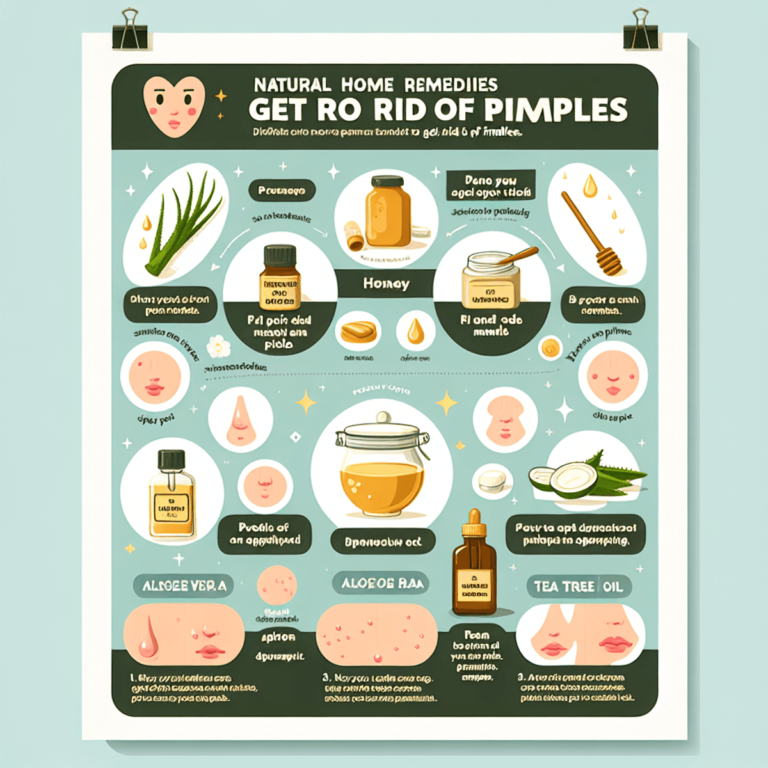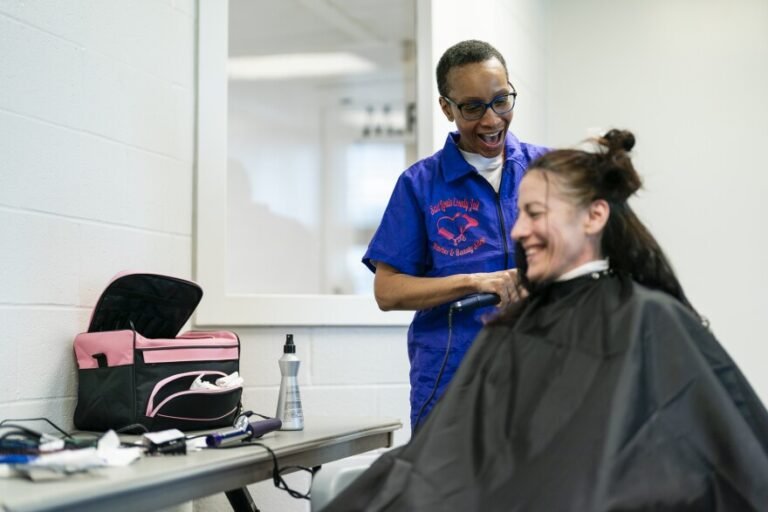Is my hair loss temporary or permanent?

Introduction
Hair loss, whether temporary or permanent, can have a significant impact on an individual’s self-esteem and overall well-being. Understanding the underlying causes of hair loss is crucial for determining the most appropriate treatment approach.
Hair loss can be categorized into two main types: temporary and permanent. Temporary hair loss is often linked to specific triggers such as trauma, illness, stress, weight loss, or childbirth. On the other hand, permanent hair loss is typically associated with genetic predisposition, medical conditions, and aging factors.
It’s essential to recognize the distinction between temporary and permanent hair loss because the treatment approaches for these conditions differ significantly. By gaining insight into the causes of hair loss, individuals can make informed decisions about seeking professional evaluation and embracing suitable management strategies.
In the following sections, we will delve deeper into:
- The characteristics of temporary hair loss, including triggers like telogen effluvium, medication side effects, hormonal changes, and nutritional deficiencies.
- The underlying factors contributing to permanent hair loss, such as genetics, inflammatory/autoimmune conditions, and age-related factors.
- Treatment options for both temporary and permanent hair loss to provide valuable guidance for individuals experiencing these concerns.
By enhancing our understanding of temporary and permanent hair loss, we can empower ourselves and others to take proactive steps towards addressing these issues effectively.
Understanding Temporary Hair Loss
Hair loss can be distressing, but it’s important to know what causes it so you can manage it properly. Temporary hair loss, also known as telogen effluvium, is a common condition with different triggers and characteristics.
1. Telogen Effluvium
Telogen effluvium is a type of temporary hair loss where you shed a lot of hair. It happens when many hair follicles at the same time enter the telogen (resting) phase of the hair growth cycle. As a result, your hair becomes noticeably thinner or you may even lose some of it.
Common Triggers
- Trauma: Physical trauma like surgeries or accidents can cause telogen effluvium.
- Illness: Severe illnesses, especially those with high fever, can trigger this temporary hair loss condition.
- Stress: Emotional or psychological stress can disrupt your normal hair growth cycle, leading to more shedding.
Duration and Characteristics
Telogen effluvium usually lasts for about three to six months before you start seeing significant regrowth. During this time, it’s normal to notice excessive hair shedding when you wash or comb your hair. The thinning or shedding may not be in specific areas but rather spread out.
Managing Underlying Causes for Hair Regrowth
To help your hair grow back and get its normal thickness again, it’s important to address what caused your telogen effluvium in the first place. Here are some steps you can take:
- Identify and manage stressors in your life that may be affecting your hair growth.
- Give yourself time to recover from any illnesses that might have triggered the temporary hair loss.
- Adopt healthy habits like eating a balanced diet, getting enough sleep, and exercising regularly.
By understanding telogen effluvium and what can trigger it, you can take action to deal with the underlying causes and promote regrowth.
2. Medication Side Effects
Hair loss can sometimes occur as a temporary side effect of certain medications. This type of hair loss is often referred to as medication-induced telogen effluvium. Understanding the connection between medication and temporary hair loss can help individuals make informed decisions about their treatment options.
How certain drugs can cause hair loss on a temporary basis
Many medications can disrupt the natural hair growth cycle, leading to increased shedding and temporary hair loss. This occurs because these drugs can push hair follicles into the resting phase (telogen phase) prematurely, causing more hairs to fall out than usual.
Examples of medications that may contribute to hair shedding
Several categories of medications have been associated with temporary hair loss. Some common culprits include:
- Anticoagulants (blood thinners)
- Antidepressants
- Anticonvulsants
- Beta-blockers (used for high blood pressure)
- Nonsteroidal anti-inflammatory drugs (NSAIDs)
- Chemotherapy drugs
Hair regrowth after discontinuation or adjustment of medications
The good news is that in most cases, once the medication is discontinued or adjusted, the hair growth cycle typically resumes its normal pattern, and regrowth occurs within a few months. It’s important to note that individual responses may vary, and patience is key during this process.
It’s essential to consult with a healthcare professional if you suspect that your medication is causing temporary hair loss. They can evaluate your situation and determine whether adjusting your medication regimen or exploring alternative treatments is necessary.
In addition to medication-induced telogen effluvium, it’s crucial to consider other potential causes of temporary hair loss. Addressing these underlying factors can further promote healthy hair regrowth:
Managing underlying causes for hair regrowth
Besides medication side effects, there are other common triggers for temporary hair loss, such as trauma, illness, stress, and nutritional deficiencies. By addressing these underlying causes, individuals can support the regrowth of their hair. Here are some strategies to consider:
- Trauma: If physical or emotional trauma has triggered hair loss, seeking therapy or counseling may help manage stress levels and promote healing.
- Illness: Treating the underlying illness or condition that is causing hair loss is crucial for regrowth. Working closely with healthcare professionals to manage and treat the illness can significantly impact hair health.
- Stress: Implementing stress management techniques such as exercise, meditation, or therapy can help reduce the impact of stress on hair growth.
- Nutritional deficiencies: Ensuring a balanced diet rich in essential nutrients like iron, zinc, biotin, and vitamins A and E can support healthy hair growth. If necessary, supplements may be recommended under medical supervision.
Understanding the reversible nature of medication-induced temporary hair loss empowers individuals to take proactive steps in managing their hair health. By working closely with healthcare professionals and addressing any underlying causes, individuals can increase their chances of regaining healthy hair growth.
Remember that each person’s situation is unique, and it’s important to seek professional advice tailored to your specific needs when dealing with temporary hair loss due to medication side effects.
Understanding Hormonal Changes and Temporary Hair Loss
Hormones play a significant role in regulating the hair growth cycle, and fluctuations can lead to temporary hair loss in various stages of life. Understanding these hormonal changes is crucial for identifying and addressing the underlying causes of temporary hair loss.
1. Impact of Hormones on the Hair Growth Cycle
Hormones, such as estrogen, progesterone, testosterone, and thyroid hormones, influence the duration and quality of the hair growth cycle. Fluctuations in these hormones can disrupt the natural rhythm of hair growth, leading to increased shedding and thinning.
2. Temporary Hair Loss During Hormonal Changes
Pregnancy and Postpartum:
During pregnancy, elevated levels of estrogen prolong the growth phase of hair, resulting in thicker, more lustrous hair. However, after childbirth, a dramatic drop in estrogen levels can trigger excessive shedding known as postpartum telogen effluvium. This condition typically resolves within a few months as hormone levels stabilize.
Menopause:
The hormonal shifts experienced during menopause, particularly a decrease in estrogen production, can contribute to temporary hair loss. As estrogen plays a role in promoting hair growth, its reduction can lead to thinning and increased shedding.
Thyroid Issues:
Both hypothyroidism and hyperthyroidism can disrupt the balance of hormones essential for healthy hair growth. Hypothyroidism may lead to brittle, dry hair with increased shedding, while hyperthyroidism can cause fine, fragile hair prone to breakage.
3. Restoring Hormonal Balance for Reversing Hair Loss
Addressing temporary hormonal imbalances requires a comprehensive approach tailored to the specific hormonal issue at hand:
Pregnancy and Postpartum:
Postpartum hair loss typically resolves on its own as hormone levels stabilize. However, maintaining a balanced diet rich in essential nutrients can support healthy regrowth during this period.
Menopause:
Consultation with a healthcare provider is essential for managing hormonal changes during menopause. Hormone replacement therapy (HRT) or other medications may be recommended to alleviate symptoms such as hair loss.
Thyroid Issues:
Effective management of thyroid disorders through medication and lifestyle adjustments is crucial for stabilizing hormone levels and minimizing the impact on hair health.
Understanding the transient nature of temporary hair loss associated with hormonal changes empowers individuals to seek appropriate interventions that align with their specific needs.
4. Nutritional Deficiencies
Another common cause of temporary hair loss is nutritional deficiencies. When your body lacks essential nutrients, it can lead to temporary shedding and thinning of the hair. In this section, we will discuss how inadequate nutrition can affect your hair and what steps you can take to improve your diet for promoting regrowth.
Essential Nutrients for Hair Health
Proper nutrition is crucial for maintaining the health of your hair. Certain vitamins, minerals, and proteins play a key role in the growth and strength of your hair follicles. Here are some essential nutrients that you need for healthy hair:
- Biotin: Also known as vitamin B7, biotin is essential for promoting hair growth and strengthening the hair shaft. It helps in the production of keratin, a protein that forms the structural component of hair.
- Iron: Iron deficiency can lead to anemia, which is a common cause of temporary hair loss. Iron is necessary for carrying oxygen to the hair follicles, promoting their growth and preventing them from becoming weak and brittle.
- Zinc: Zinc plays a vital role in DNA and RNA synthesis, which is essential for healthy cell division. It also helps in keeping the oil glands around the hair follicles functioning properly.
- Vitamin C: This vitamin is an antioxidant that helps in the production of collagen, which is essential for healthy hair growth. It also aids in the absorption of iron from plant-based sources.
- Omega-3 Fatty Acids: These healthy fats help in moisturizing the scalp and preventing dryness and inflammation that can lead to hair loss.
The Impact of Inadequate Nutrition on Hair Health
When you don’t get enough of these essential nutrients through your diet, your hair follicles can become weak and prone to shedding. This can result in temporary hair loss known as telogen effluvium, where a large number of hairs prematurely enter the resting phase of the hair growth cycle.
Improving Diet and Nutrient Intake for Promoting Regrowth
The good news is that temporary hair loss due to nutritional deficiencies is reversible. By making some changes to your diet and ensuring that you are getting enough of these essential nutrients, you can promote regrowth and improve the overall health of your hair. Here are some tips:
- Eat a Balanced Diet: Include a variety of fruits, vegetables, whole grains, lean proteins, and healthy fats in your diet. This will ensure that you are getting a wide range of nutrients that are essential for hair health.
- Focus on Nutrient-Rich Foods: Incorporate foods that are rich in biotin, iron, zinc, vitamin C, and omega-3 fatty acids into your meals. Some examples include eggs, nuts and seeds, leafy greens, citrus fruits, fish, and lean meats.
- Consider Supplements: If you are unable to meet your nutrient needs through diet alone, you may consider taking supplements specifically formulated for promoting hair health. However, it’s important to consult with a healthcare professional before starting any supplements.
- Avoid Crash Diets: Rapid weight loss diets or restrictive eating patterns can deprive your body of essential nutrients and lead to temporary hair loss. Aim for gradual and sustainable weight loss instead.
- Manage Stress: Stress can contribute to hair loss by disrupting the normal hair growth cycle. Practice stress management techniques such as exercise, meditation, and relaxation exercises to reduce its impact on your hair health.
By addressing nutritional deficiencies and improving your diet, you can reverse temporary hair loss caused by inadequate nutrition. Remember that it takes time for your body to replenish nutrient stores and for your hair to regrow, so be patient and consistent with your efforts.
Determining Permanent Hair Loss
Understanding whether your hair loss is temporary or permanent is crucial for determining the appropriate treatment approach. While temporary hair loss is often due to external factors such as stress, illness, or hormonal changes, permanent hair loss typically has underlying factors that contribute to its development. In this section, we will explore the root causes of permanent hair loss and how they differ from temporary hair loss.
1. Underlying Factors
When it comes to permanent hair loss, there are several underlying factors that can contribute to its occurrence. Understanding these factors can help shed light on why your hair loss may be permanent:
- Genetics: One of the primary factors behind permanent hair loss is genetics. If you have a family history of androgenetic alopecia (commonly known as male or female pattern baldness), it increases the likelihood of experiencing permanent hair loss. This condition occurs when hair follicles become sensitive to dihydrotestosterone (DHT), leading to miniaturization and eventual cessation of hair growth.
- Medical Conditions: Certain medical conditions can also cause permanent hair loss. For example, autoimmune conditions like alopecia areata and scarring alopecia can lead to irreversible damage to the hair follicles, resulting in bald patches or complete scalp loss. Other conditions such as trichotillomania (hair-pulling disorder) or trichorrhexis nodosa (hair shaft abnormalities) can also contribute to long-term hair loss if left untreated.
- Age-Related Factors: As we age, our hair follicles naturally undergo changes that can lead to permanent hair loss. This includes decreased blood flow to the scalp, reduced production of essential proteins for hair growth, and a shorter growth phase for each hair follicle. These age-related factors make it more challenging for the body to regenerate new hairs and can result in thinning or balding over time.
It is important to note that while these factors can contribute to permanent hair loss, they may not be the sole cause. Often, multiple factors work together to result in long-term hair loss. Consulting with a healthcare professional or dermatologist can help you determine the underlying causes specific to your situation.
2. Inflammatory/Autoimmune Conditions
In the world of permanent hair loss, inflammatory and autoimmune conditions play a significant role in causing long-term management challenges for individuals experiencing hair loss. These conditions are characterized by the body’s immune system attacking the hair follicles, leading to irreversible damage and subsequent hair loss.
Chronic Inflammation and Hair Loss
Chronic inflammation can trigger autoimmune responses that target the hair follicles, resulting in conditions such as alopecia areata. This inflammatory process disrupts the normal hair growth cycle, leading to patchy or complete hair loss in affected areas.
Autoimmune Hair Loss Disorders
Alopecia areata is a prime example of an autoimmune condition that causes permanent hair loss. It manifests as sudden, patchy hair loss and can progress to total scalp hair loss (alopecia totalis) or complete body hair loss (alopecia universalis). The unpredictable nature of alopecia areata makes it challenging to manage effectively.
Scarring Alopecia
Scarring alopecia, also known as cicatricial alopecia, represents a group of rare disorders characterized by permanent destruction of hair follicles and subsequent scarring. The inflammatory process leads to the replacement of hair follicles with scar tissue, preventing new hair growth and resulting in irreversible bald patches.
Understanding the intricate relationship between chronic inflammation, autoimmune responses, and permanent hair loss is crucial for developing targeted treatment approaches and management strategies. By addressing the underlying inflammatory and immune system dysfunction, individuals with these conditions can work towards preserving their remaining hair and preventing further progression of the disorder.
The complexities of managing inflammatory and autoimmune-related permanent hair loss underscore the importance of seeking professional evaluation and guidance for personalized treatment plans tailored to each individual’s unique needs.
Seeking Proper Diagnosis and Treatment
When you experience hair loss, it’s important to take action and find the right diagnosis and treatment. Understanding the reasons behind your hair loss can help you determine the best course of action. In this section, we’ll look at different ways to treat temporary hair loss and why it’s important to address the root causes.
Treatment Options for Temporary Hair Loss
1. Addressing Underlying Causes
The first step in treating temporary hair loss is identifying and addressing the underlying causes. By targeting the root cause, you can effectively promote regrowth and prevent further hair loss. Some common underlying causes include:
- Stress: If stress is causing your hair loss, it’s important to find healthy ways to cope with it. Exercise, meditation, or therapy can all be beneficial in reducing stress levels.
- Dietary Deficiencies: Nutritional imbalances can contribute to temporary hair loss. Making sure you’re getting enough vitamins, minerals, and proteins that are essential for healthy hair growth is crucial. Foods rich in biotin, iron, zinc, and vitamin D should be included in your diet or consult with a healthcare professional about supplements.
- Medical Conditions: Certain medical conditions like thyroid disorders or hormonal imbalances can lead to temporary hair loss. Treating these conditions under the guidance of a healthcare professional can help restore hair health.
2. Over-the-Counter Solutions
There are various over-the-counter (OTC) solutions available that can help promote hair regrowth in cases of temporary hair loss. These products typically contain ingredients like minoxidil, which has been proven effective in stimulating hair growth. However, it’s important to note that results may vary, and it’s best to consult with a dermatologist before starting any OTC treatment.
3. Supplements for Promoting Regrowth
In addition to OTC solutions, certain supplements can support hair regrowth. Some commonly recommended supplements for hair health include biotin, vitamin D, iron, and omega-3 fatty acids. While these supplements may help in some cases, it’s essential to consult with a healthcare professional before adding them to your routine to ensure they are suitable for your specific needs.
It’s important to understand that these treatment options may not be effective for permanent hair loss. If you suspect that your hair loss may be permanent, it is advisable to seek professional evaluation for a proper diagnosis and personalized treatment plan.
Hair loss specialists, such as dermatologists or trichologists, can provide a comprehensive evaluation of your condition and recommend the most appropriate treatment options based on your specific needs. They may conduct a thorough examination of your scalp, review your medical history, and potentially perform additional tests to determine the underlying cause of your hair loss.
By seeking professional diagnosis and treatment, you can have peace of mind knowing that you are on the right path towards managing your hair loss effectively. Professional guidance can also help you avoid wasting time and money on treatments that may not be effective for your specific condition.
Remember, everyone’s experience with hair loss is unique, and what works for one person may not work for another. Therefore, it is important to consult with a healthcare professional who specializes in hair loss to receive personalized recommendations tailored to your specific needs.
Hair Transplantation for Permanent Hair Loss
Hair loss can be distressing, especially when it becomes permanent. While temporary hair loss can often be resolved by addressing underlying causes and promoting regrowth, permanent hair loss requires a different approach. Hair transplantation is considered the only viable option for restoring volume in cases of permanent hair loss.
How Does Hair Transplantation Work?
Hair transplant surgery involves removing hair follicles from one part of the body, known as the donor area, and transplanting them to the areas experiencing hair loss, known as the recipient area. This procedure is typically performed under local anesthesia and can take several hours to complete, depending on the extent of hair loss and the desired outcome.
Techniques Used in Hair Transplantation
There are two main techniques used in hair transplantation:
- Follicular Unit Transplantation (FUT): Also known as strip harvesting, FUT involves removing a strip of skin containing hair follicles from the donor area. The strip is then dissected into individual follicular units, which are transplanted into tiny incisions made in the recipient area. This technique allows for the transplantation of a large number of grafts in a single session.
- Follicular Unit Extraction (FUE): FUE involves individually extracting follicular units from the donor area using a specialized punch tool. These individual grafts are then transplanted into the recipient area. FUE does not require a linear incision like FUT, resulting in minimal scarring and a quicker recovery time. However, it may take multiple sessions to achieve the desired results.
Both FUT and FUE have their advantages and disadvantages, and the choice between them depends on various factors such as the patient’s specific needs, preferences, and the expertise of the surgeon.
Is Hair Transplantation Right for You?
It’s important to note that hair transplantation is not a solution for everyone experiencing permanent hair loss. Before considering this surgical procedure, it’s crucial to obtain a professional diagnosis from a qualified healthcare professional. A comprehensive approach to treating hair loss should be based on the nature of the condition and individual circumstances.
Hair transplantation may not be suitable for individuals with certain medical conditions, unrealistic expectations, or insufficient donor hair. Consulting a healthcare professional specializing in hair loss is essential to determine if hair transplantation is a viable option and to discuss alternative treatments if necessary.
What to Expect from Hair Transplantation
While hair transplantation can effectively restore volume in areas of permanent hair loss, it’s important to have realistic expectations. The procedure aims to provide natural-looking results by redistributing existing hair follicles rather than creating new ones. It may take several months for the transplanted hair to start growing, and multiple sessions may be required for optimal results.
Conclusion
Hair transplantation is a surgical procedure that offers hope for individuals experiencing permanent hair loss. It involves transplanting hair follicles from a donor area to areas of thinning or baldness. However, it’s important to consult a healthcare professional specialized in hair loss treatment to determine if this procedure is suitable and to explore other treatment options if necessary. Hair transplantation can provide natural-looking results and restore confidence in individuals with permanent hair loss.
Conclusion
Hair loss can be a distressing experience, whether it is temporary or permanent. Understanding the causes and appropriate management strategies is crucial for addressing this issue effectively. Here are some key points to consider as you navigate through the journey of hair loss:
1. Seek Professional Evaluation
If you are experiencing hair loss, it’s important to consult with a healthcare professional or a dermatologist. They can help identify the underlying cause of your hair loss and recommend suitable treatment options. Professional evaluation provides a clear understanding of your specific condition and ensures that you receive tailored advice.
2. Embrace Knowledge and Confidence
Educate yourself about the different types of hair loss, their causes, and potential treatment options. Having knowledge about your condition can empower you to make informed decisions regarding your hair care and treatment. Confidence plays a significant role in managing hair loss, as it allows you to embrace your natural beauty while actively seeking solutions.
3. Stay Informed About Management Strategies
Stay updated with the latest advancements in hair care and treatment. Whether it’s adopting a new hair care routine, exploring innovative therapies, or considering lifestyle adjustments, being aware of various management strategies can be beneficial. Stay connected to reliable sources of information and seek support from reputable professionals in the field.
In conclusion, navigating through the complexities of temporary or permanent hair loss requires patience, determination, and a proactive approach. By seeking professional guidance, embracing knowledge, and staying informed about effective management strategies, individuals can address their concerns with confidence and optimism. Remember that you are not alone in this journey, and there are resources available to support you every step of the way.
Understanding the nature of your hair loss empowers you to take control of your hair health and well-being. With the right mindset and access to appropriate resources, managing temporary or permanent hair loss can become a more manageable aspect of your overall health and self-care routine.










